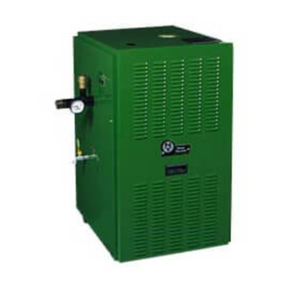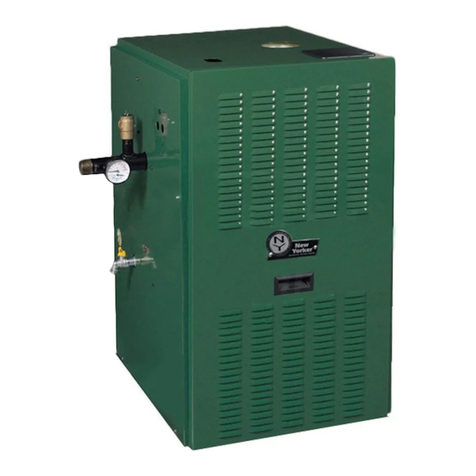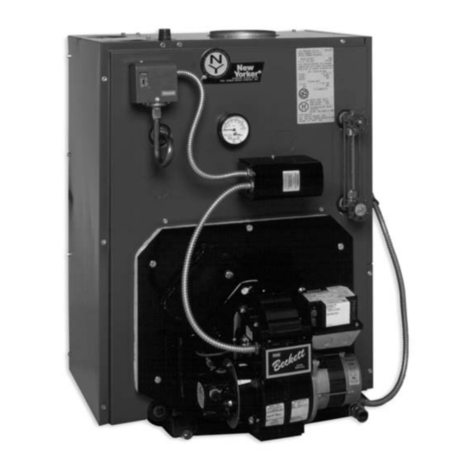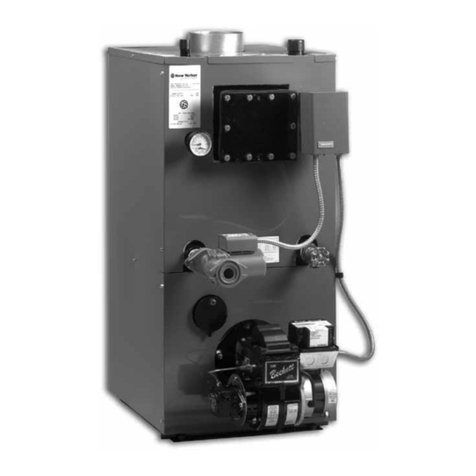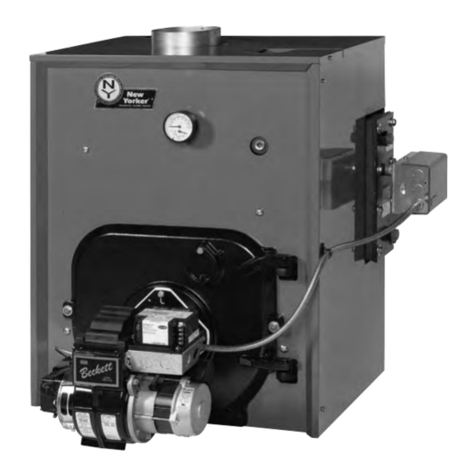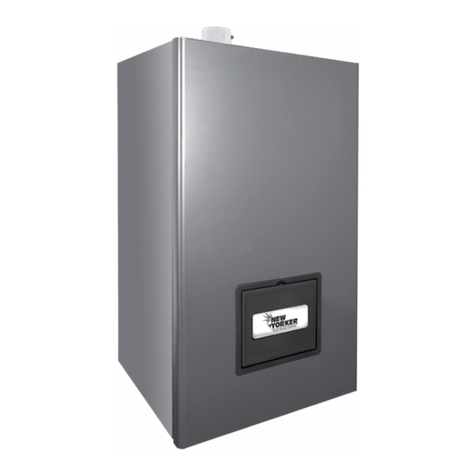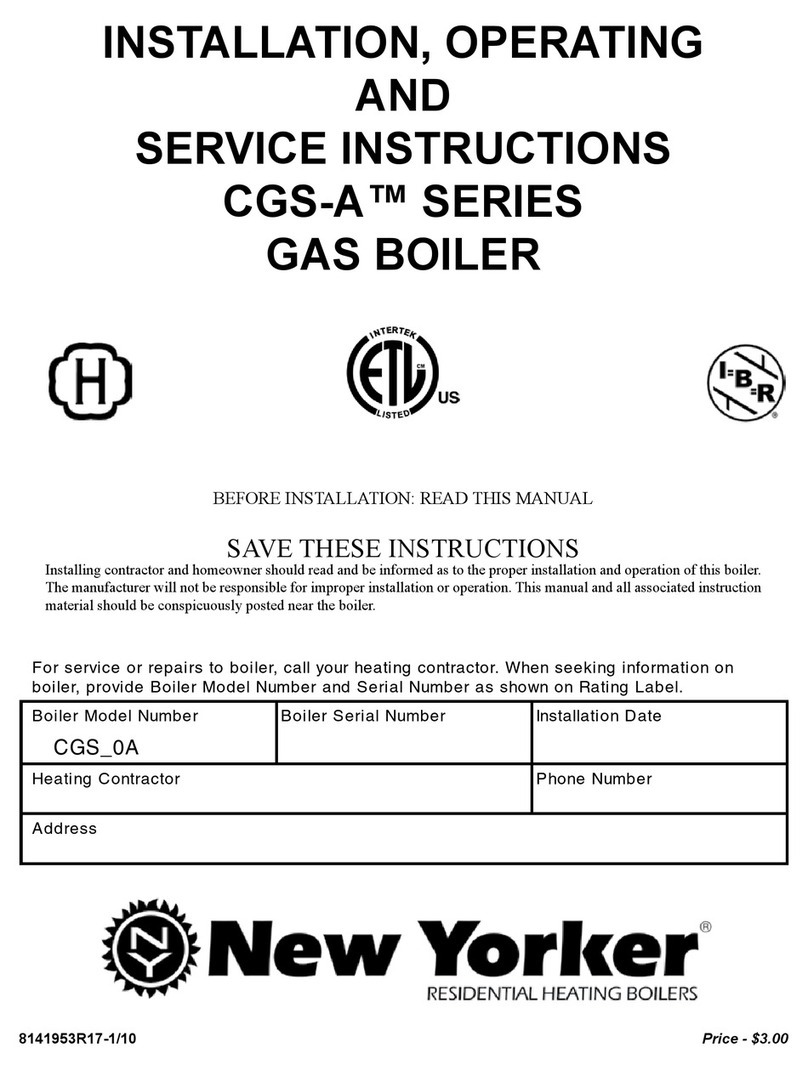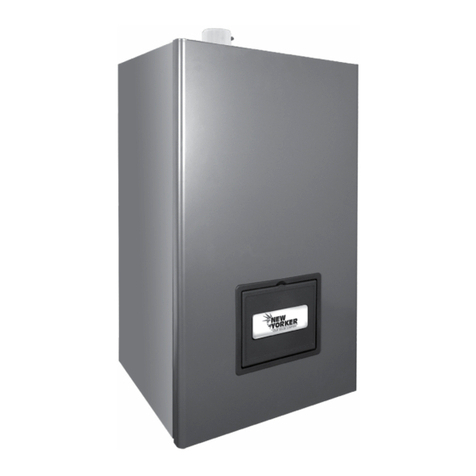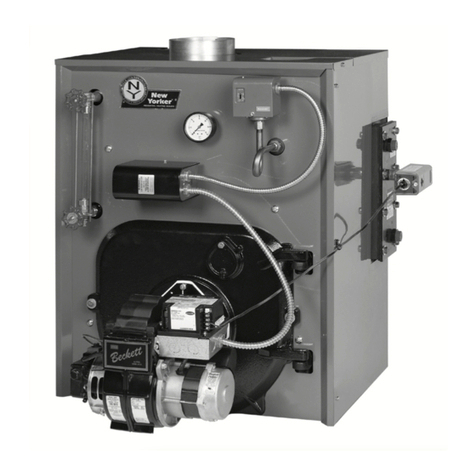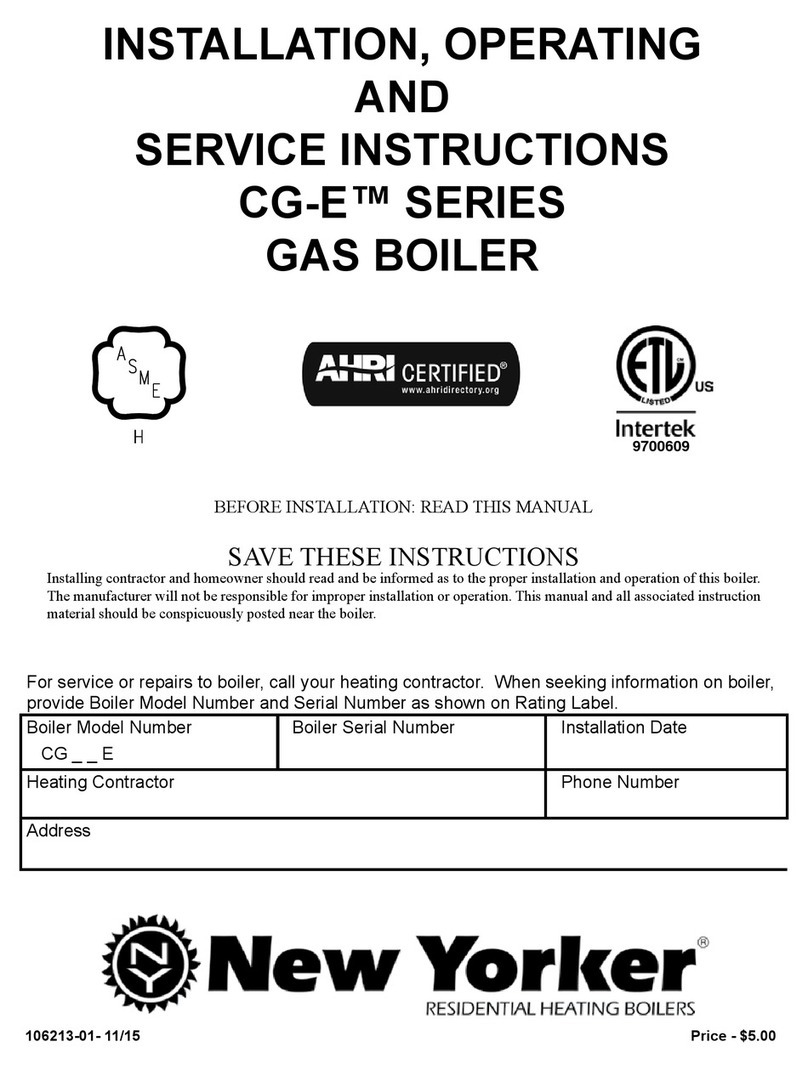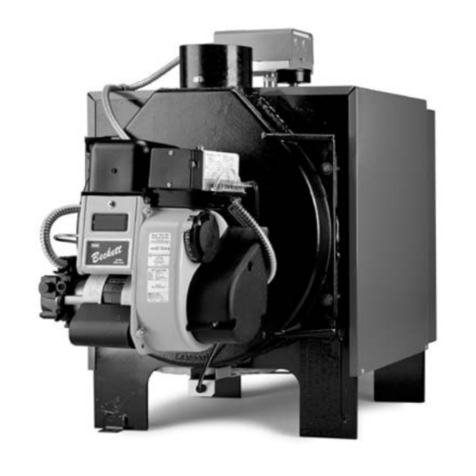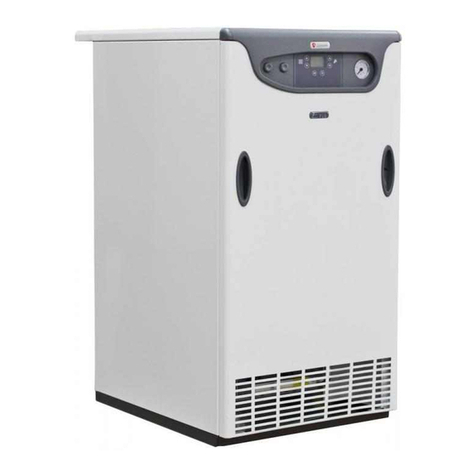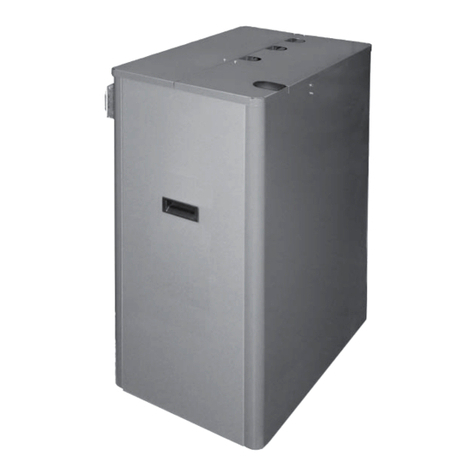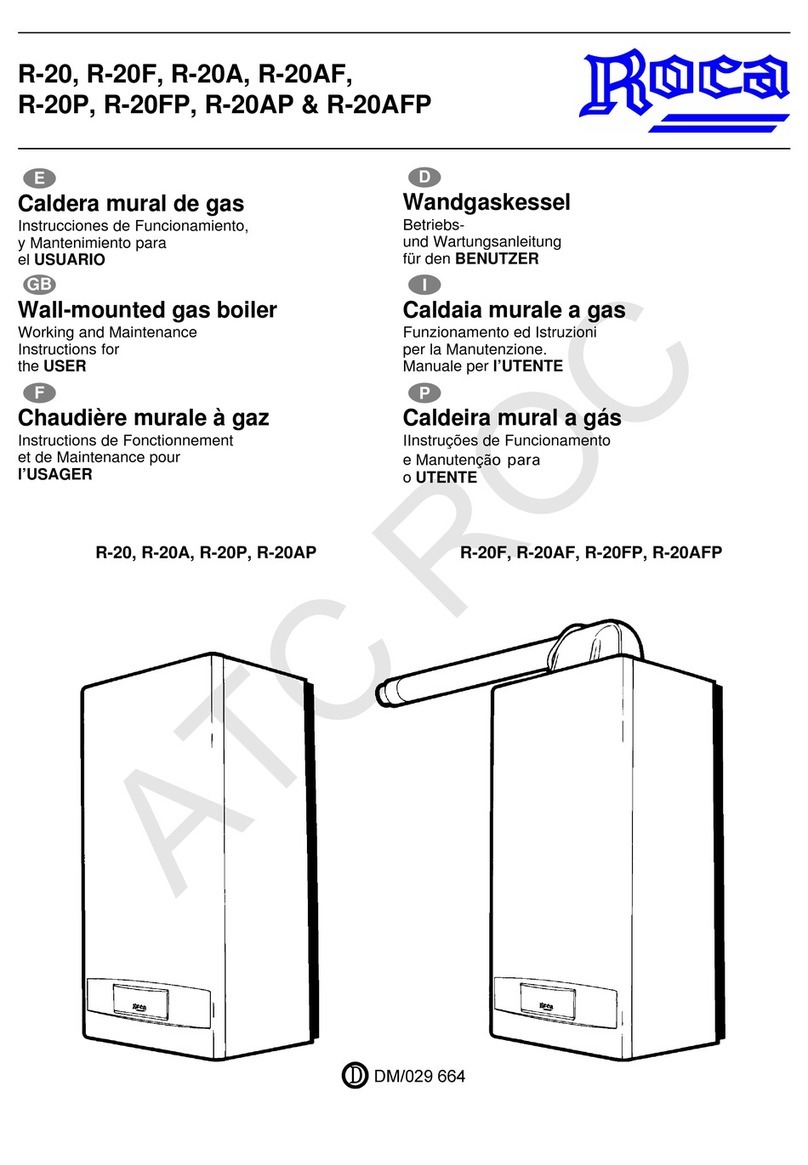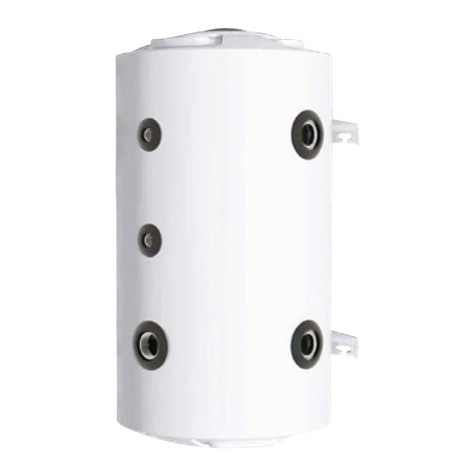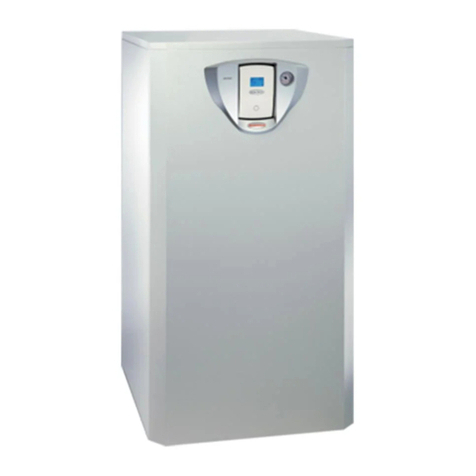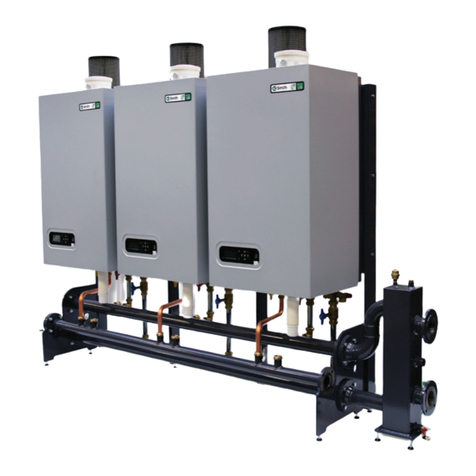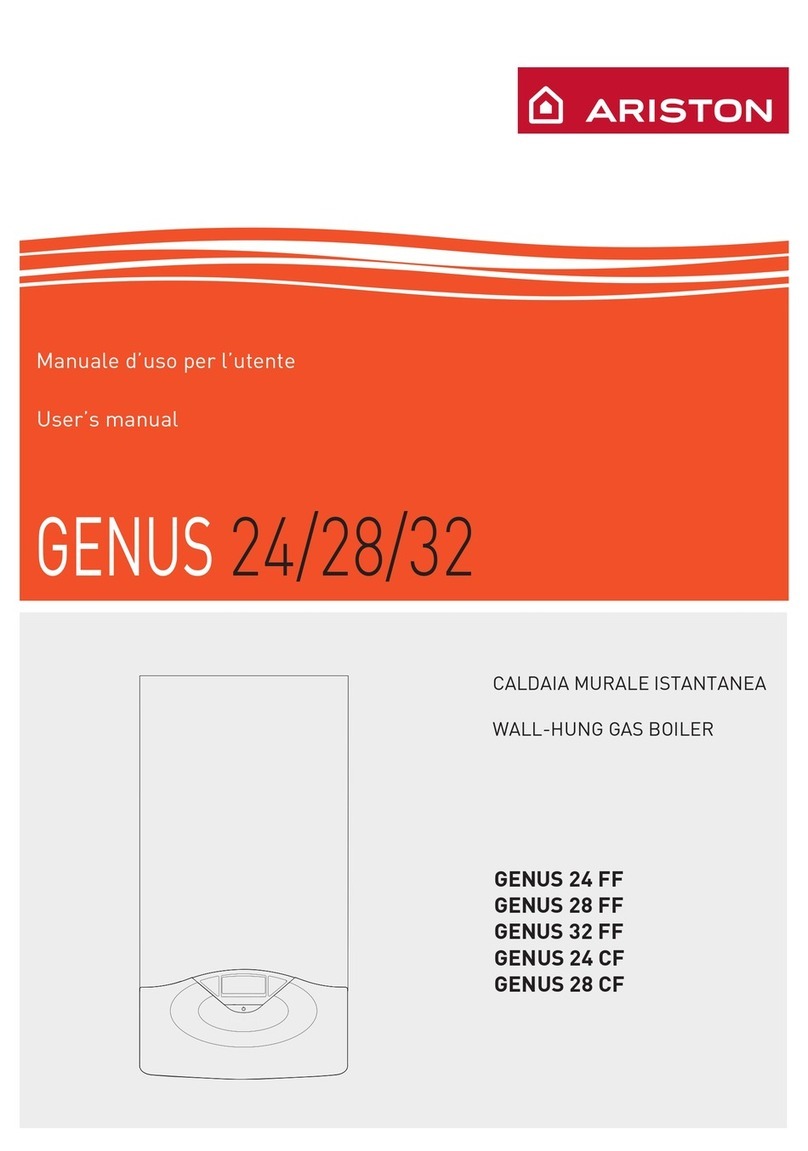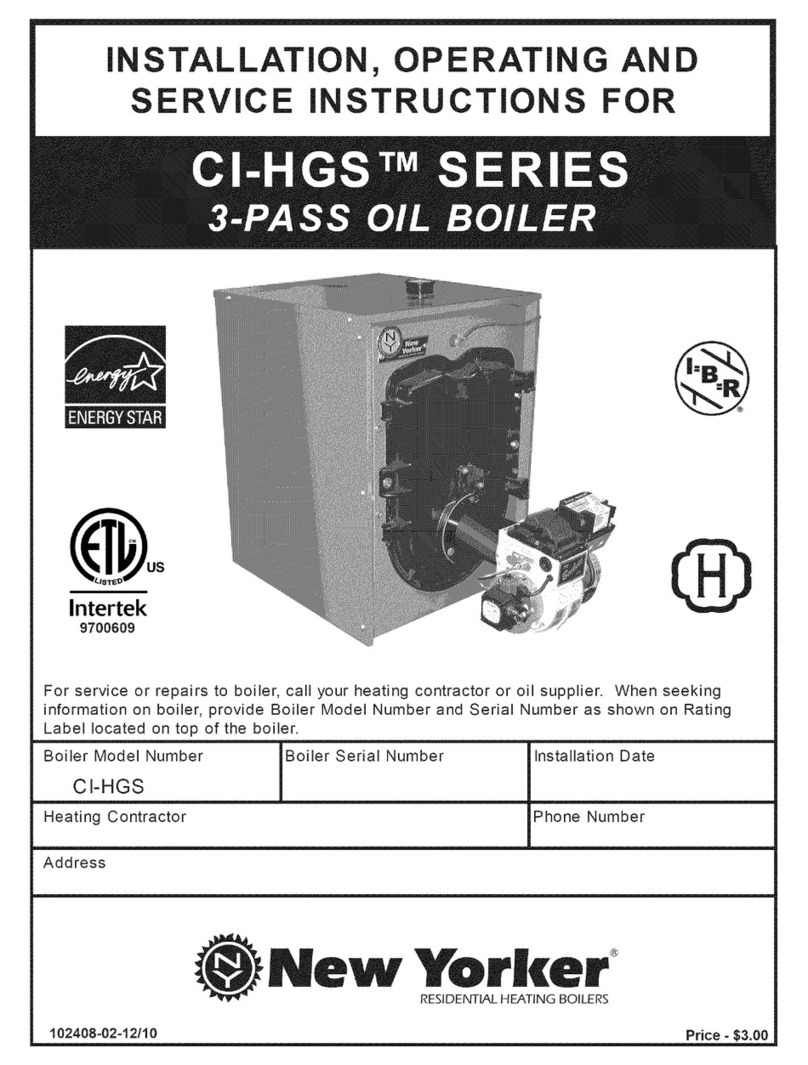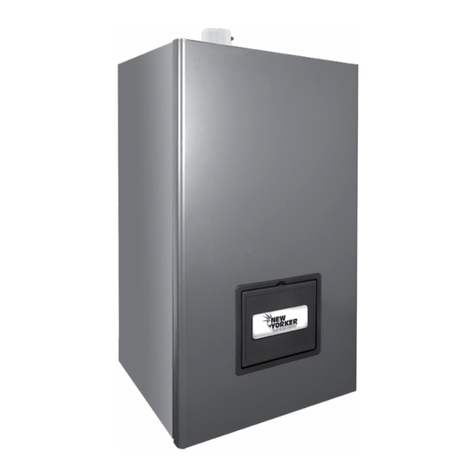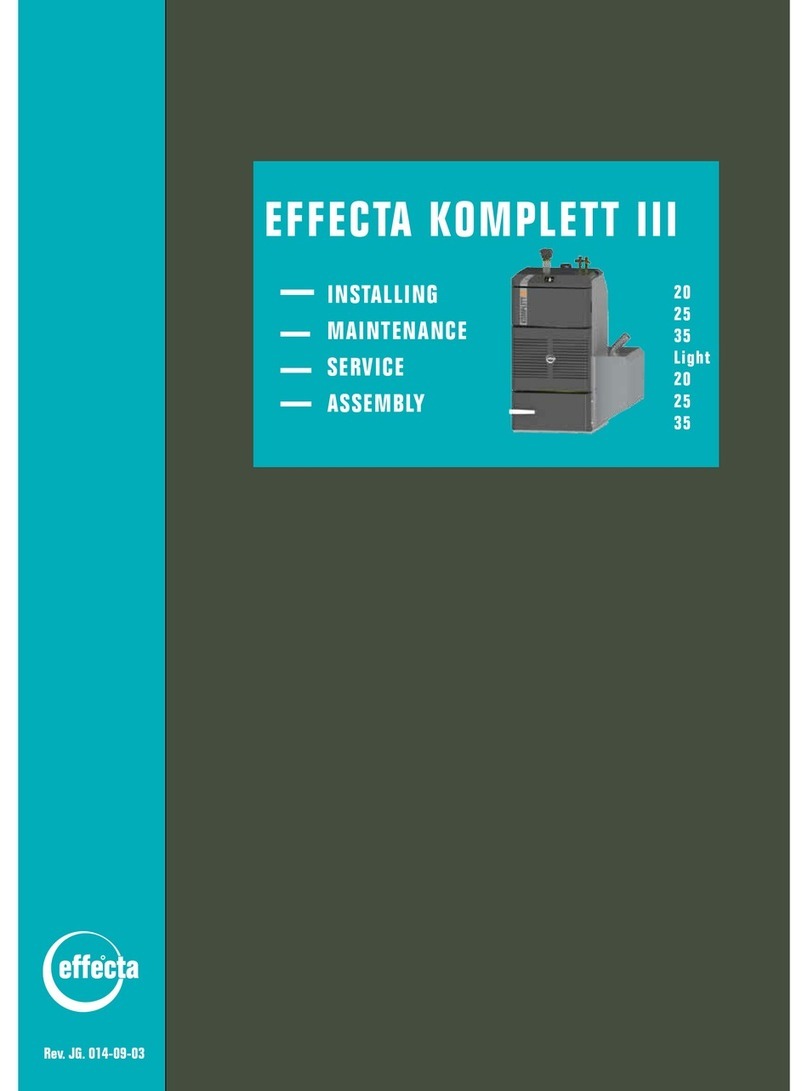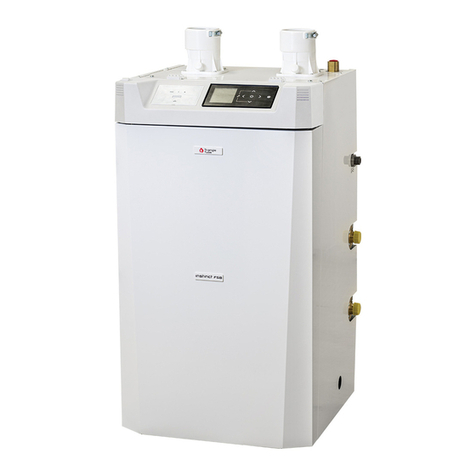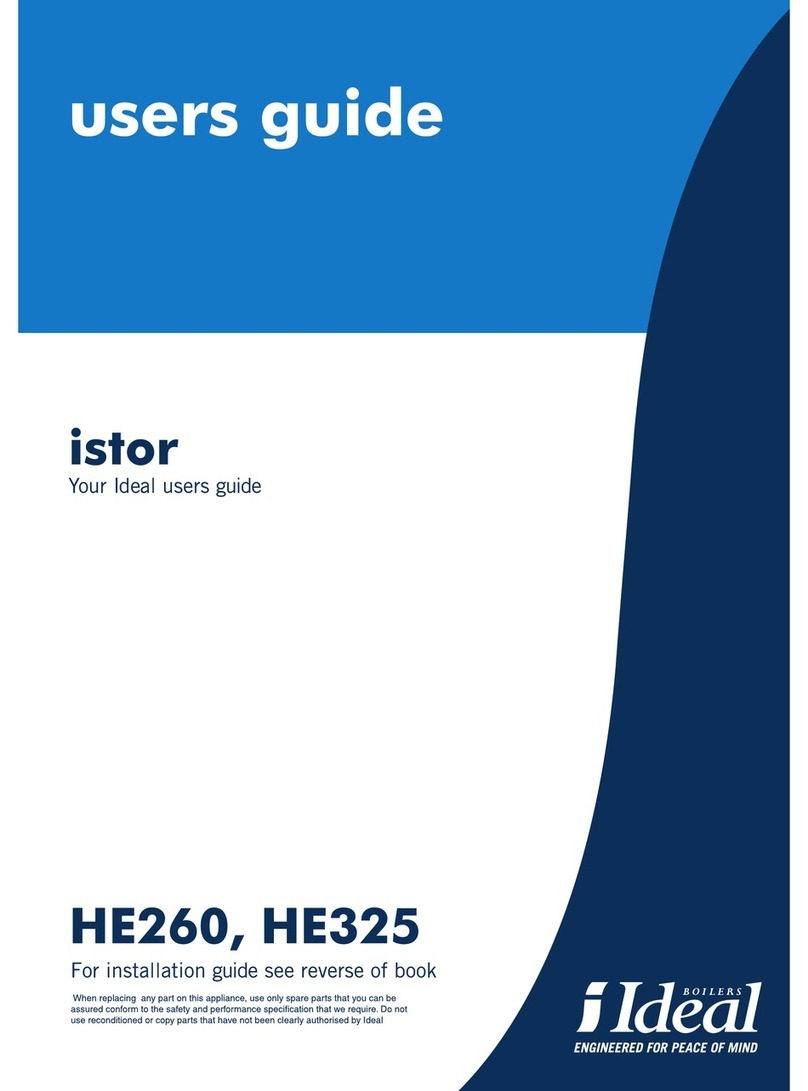
16
g. Vent the system, including the radiation.
h. Allow boiler water to reach operating
temperature, if possible.
i. Continue to circulate the water for a few hours.
j. Stop firing the boiler.
k. Drain the system in a manner and to a location
that hot water can be discharged with safety.
l. Remove plugs from all available returns and
wash the water side of the boiler as thoroughly as
possible, using a high-pressure water stream.
m.Refill the system with fresh water.
3. Add appropriate boiler water treatment compounds
as recommended by your qualified water treatment
company.
O. HINTS ON COMBUSTION
1. NOZZLES — Although the nozzle is a relatively
inexpensive device, its function is critical to the
successful operation of the oil burner. The selection
of the nozzle supplied with the CLW boiler is the
result of extensive testing to obtain the best flame
shape and efficient combustion. Other brands of the
same spray angle and spray pattern may be used but
may not perform at the expected level of CO2and
smoke. Nozzles are delicate and should be protected
from dirt and abuse. Nozzles are mass-produced and
can vary from sample to sample. For all of those
reasons a spare nozzle is a desirable item for a
serviceman to have.
2. FUEL LEAKS — Any fuel leak between the pump
and the nozzle will be detrimental to good
combustion results. Look for wet surfaces in the air
tube, under the ignitor, and around the air inlet. Any
such leaks should be repaired as they may cause
erratic burning of the fuel and in the extreme case
may become a fire hazard.
3. AIR LEAKS — Any such leaks should be repaired,
as they may cause erratic burning of the fuel and in
extreme cases may become a fire hazard.
SUCTION LINE LEAKS -
Whatever it takes, The Oil Must Be Free of Air. This
can be a tough problem , but it must be resolved. Try
bleeding the pump through a clear tube. There must be
no froth visible. There are various test kits available to
enable you to look at the oil through clear tube. There
must be no froth visible. There are various test kits
available to enable you to look at the oil through clear
tubing adapted to the supply line at the pump fitting.
Air eliminators are on the market that have potential.
Also, electronic sight glasses are being used with good
success. At times, new tubing must be run to the tank or
new fittings put on. Just make sure you get the air out
before you leave.
Any air leaks in the fuel line will cause an unstable
flame and may cause delayed ignition noises. Use only
flare fittings in the fuel lines.
4. GASKET LEAKS — If 11.5 to 12.5% CO2with a
#1 smoke cannot be obtained in the breeching, look
for air leaks around the burner mounting gasket,
observation door, and canopy gasket. Such air leaks
will cause a lower CO2reading in the breeching. The
smaller the firing rate the greater effect an air leak
can have on CO2readings.
5. DIRT — A fuel filter is a good investment.
Accidental accumulation of dirt in the fuel system
can clog the nozzle or nozzle strainer and produce a
poor spray pattern from the nozzle. The smaller the
firing rate, the smaller the slots become in the nozzle
and the more prone to plugging it becomes with the
same amount of dirt.
6. WATER — Water in the fuel in large amounts will
stall the fuel pump. Water in the fuel in smaller
amounts will cause excessive wear on the pump, but
more importantly water doesn’t burn. It chills the
flame and causes smoke and unburned fuel to pass
out of the combustion chamber and clog the
flueways of the boiler.
7. COLD OIL — If the oil temperature approaching
the fuel pump is 40°F or lower poor combustion or
delayed ignition may result. Cold oil is harder to
atomize at the nozzle. Thus, the spray droplets get
larger and the flame shape gets longer. An outside
fuel tank that is above grade or has fuel lines in a
shallow bury is a good candidate for cold oil. The
best solution is to bury the tank and lines deep
enough to keep the oil above 40°F.
8. FLAME SHAPE — Looking into the combustion
chamber through the observation door, the flame
should appear straight with no sparklers rolling up
toward the crown of the chamber. If the flame drags
to the right or left, sends sparklers upward or makes
wet spots on the target wall, the nozzle should be
replaced. If the condition persists look for fuel leaks,
air leaks, water or dirt in the fuel as described above.
9. HIGH ALTITUDE INSTALLATIONS
Air settings must be increased at high altitudes. Use
instruments and set for 11.5 to 12.5% CO2.
10. START-UP NOISE — Late ignition is the cause of
start-up noises. If it occurs recheck for electrode
settings, flame shape, air or water in the fuel lines.
11. SHUT DOWN NOISE — If the flame runs out of
air before it runs out of fuel, an after burn with
noise may occur. That may be the result of a faulty
cut-off valve in the fuel pump, or it may be air
trapped in the nozzle line. It may take several firing
cycles for that air to be fully vented through the
nozzle. Water in the fuel or poor flame shape can
also cause shut down noises.
A very good test for isolating fuel side problems is





















